Interviewing the President of the Sovereign Nation Inside Nevada
The micronation of Molossia is very real to its leader.

His Excellency, President Kevin Baugh, of the Republic of Molossia. (All Photos: Courtesy the Republic of Molossia)

One of the world’s smallest nations is also one of its most remarkable. Like most countries, it has its own form of government (a republic), a banking system and currency, a railroad, postal service, navy, tourist attractions and citizens. It even has its own space program. But it is unusual in one respect in that it doesn’t officially exist.
Welcome to the Republic of Molossia.
What is most curious about Molossia, is that it is to be found right here in the United States. Hidden away in Northern Nevada, Molossia exists as a sovereign nation, imagined and brought into life by its President, His Excellency, Kevin Baugh, who says, “What it lacks in size it makes up for in spirit!”
For Obscura Day 2016, I caught up with the President to find out more about the history of the world’s smallest sovereign nation, and what visitors might expect.
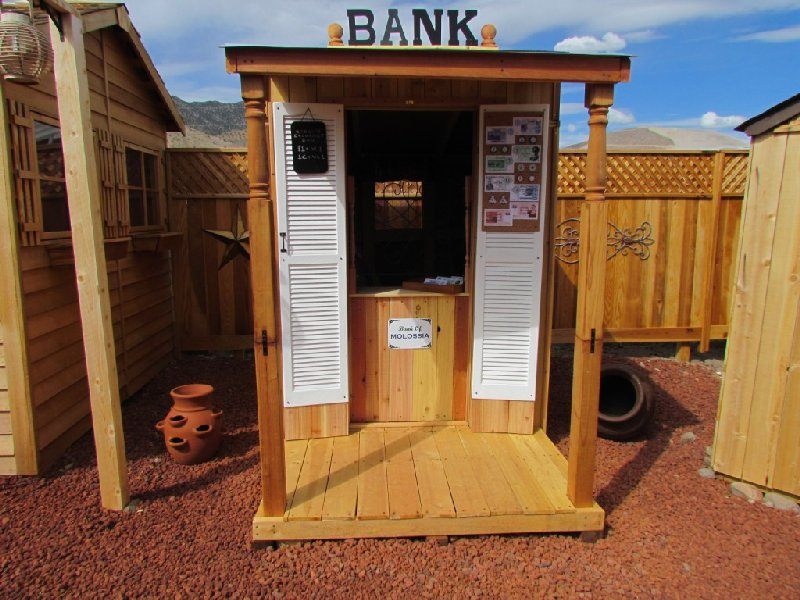
The bank at Molossia, with bank notes pinned to the outside wall.
Molossia is located near the Sierra Nevada mountains, and although only about half an hour’s drive from Reno, is firmly its own territory of just over 11 acres. The border to Molossia is marked with a sign stating that “beyond this point you are no longer in United States territory”. Like entering any other country, passport and custom laws apply, and the president will be only to glad to mark your passport with one of the rarest of stamps, “Republic of Molossia.”
Molossia is ostensibly a micronation, an independent country that isn’t recognized officially by other world governments. They live just off the page of geography books, but are very much real, physical places. Baugh explains how his own country had evolved over the past 39 years, split between northern Nevada and California.
It was, like most other micronations, a fun project, beginning when Baugh was a teenager in 1977. Back then, Molossia was a fantastical kingdom created with a friend. Now, he describes it as “a real place.”
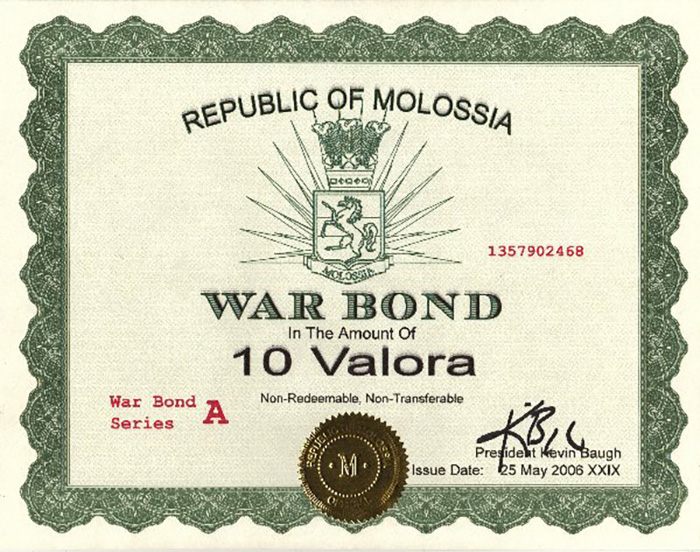
A Republic of Molossia war bond.
Today, there are around 400 or so micronations of varying sizes and seriousness. They can range from loopholes in history, such as the Principality of Seborga in Italy, whose citizens took advantage of their town being omitted from any official documents during the unification of Italy in the 1800s to create their own independent nation. Others were created with specific political agendas in mind, such as the Conch Republic in Key West, organized to protest a proposed U.S. Border Patrol roadblock in the Keys. Some, such as the obscure Kingdom of Redonda in the Caribbean, date back to the 19th century, whilst new ones are created each year. They can be found on World War II anti-aircraft platforms in the North Sea (the Principality of Sealand) and in 18th century Czech mansions (the Other World Kingdom, a monarchy where women rule over men).
They all though share a common bond in rejecting the conventional, and in claiming sovereignty over actual land. They might not have a delegate at the UN, but they are very much physically real. There is even a micronation Olympics due to be hosted in 2016 by the Democratic Republic of Belia.
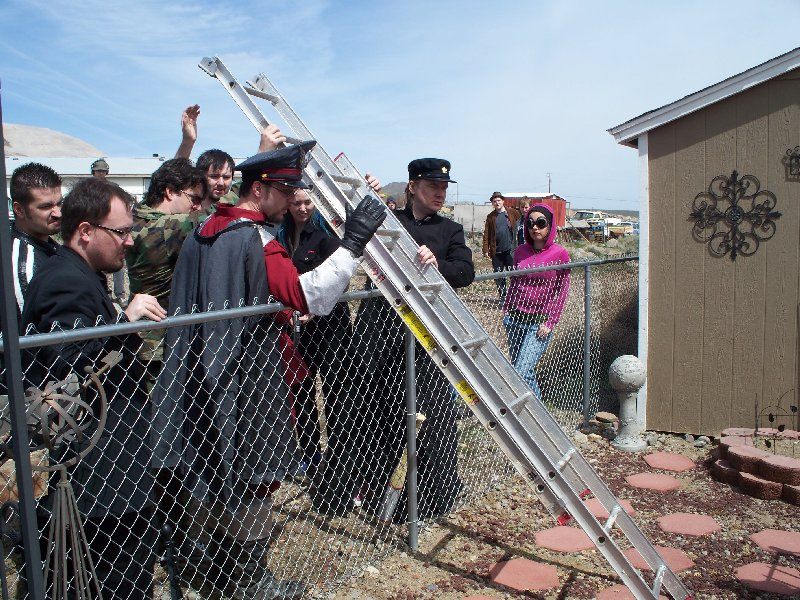
An invasion of Molossia’s territory by the government of Kickassia.

The Molossia Trading Company, in the Republic’s ‘Red Square’.
But one of the most enduring and largest is Molossia. Like most micronations, a lot of Republic is imbued with a tongue-in-cheek sense of humor; whilst other nations set their currency against the gold standard, Molossia’s currency, the Valora, is linked in value to Pillsbury Cookie Dough (the current exchange rate of 1 Valora to $1 is 0.75).
Baugh likens the sensibility of the Molossian people (at present 31 citizens) to a form of political satire. For example, Molossia claims to have been at war with the now-defunct East Germany since 1983. The dispute lies over a 15 kilometer long territory off the coast of Cuba called Ernst Thälmann Island. During a state visit in the 1970s by Erich Honecker, Fidel Castro renamed what was then called Cayo Blanco del Sur in honor of Thälmann, leader of the German Communist Party until he was imprisoned by the Nazis and executed by the Gestapo in 1944. But when East Germany was dissolved, the island was never mentioned in any official documents, and is technically the last remaining part of the former German Democratic Republic. Baugh has been waging war on the uninhabited island, which still stretch of sand called GDR beach, and until it was toppled over by a hurricane in 1998, a statue of Ernst Thälmann.
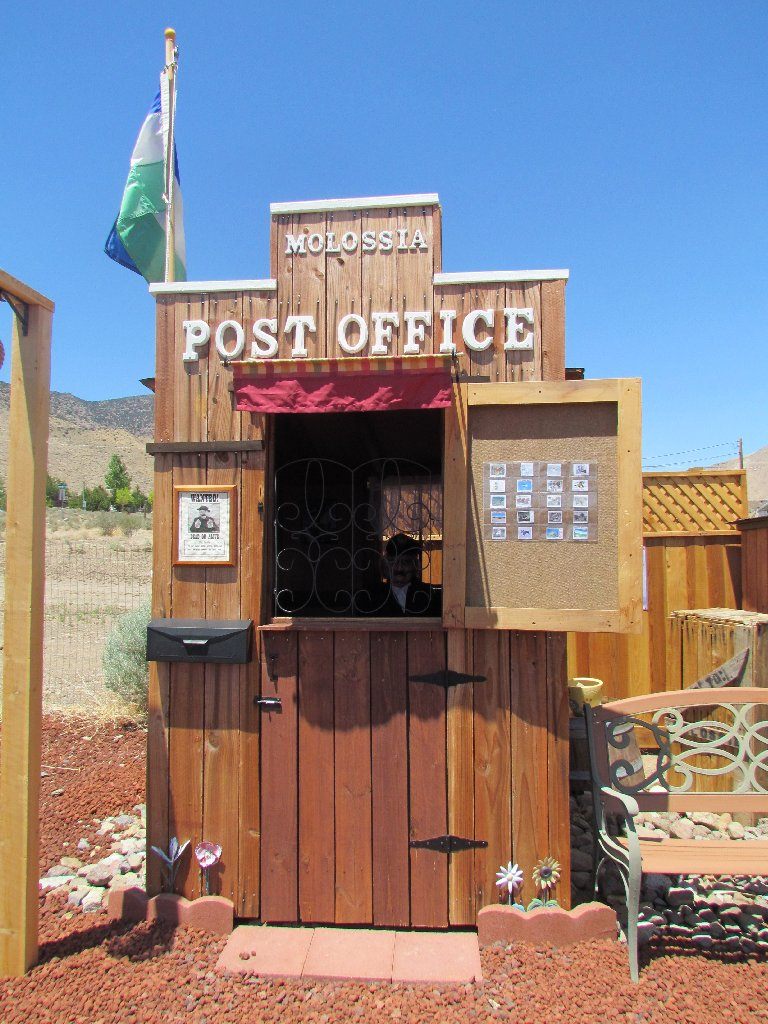
The Molossia Post Office is the oldest building in Red Square, and is manned by Ralph the Postal Guy.
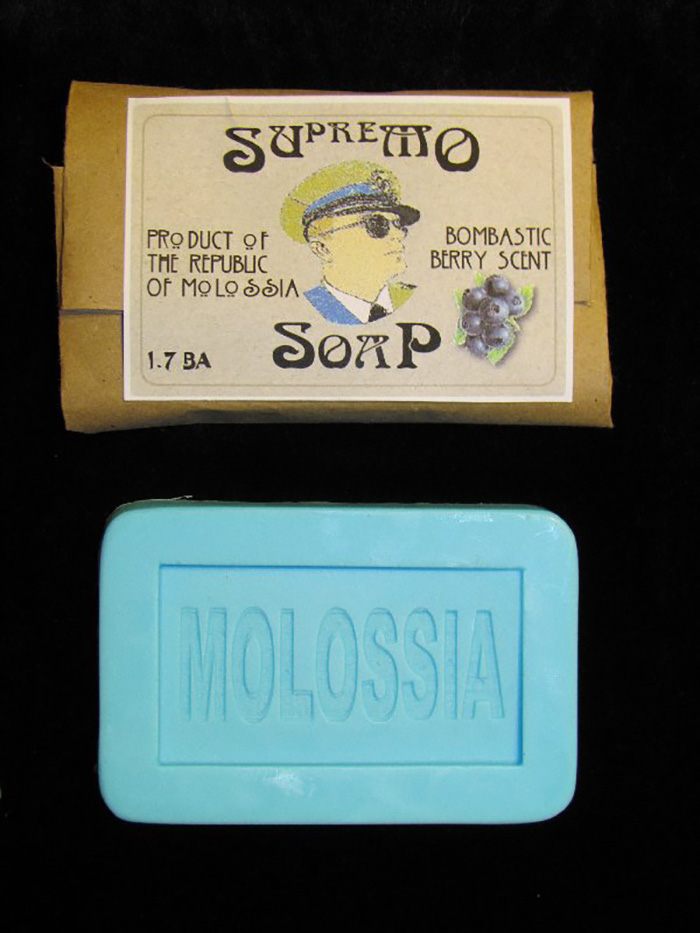
The handmade Supremo Soap of the Republic of Molassia.
Would the recent lift of travel restrictions between the U.S. and Cuba enable Molossians to visit the contested land? “We do plan to someday,” Baugh says, ”Of course that would likely end our never-ending war, which would be a major milestone in our nation’s history—and something we may not wish to happen!”
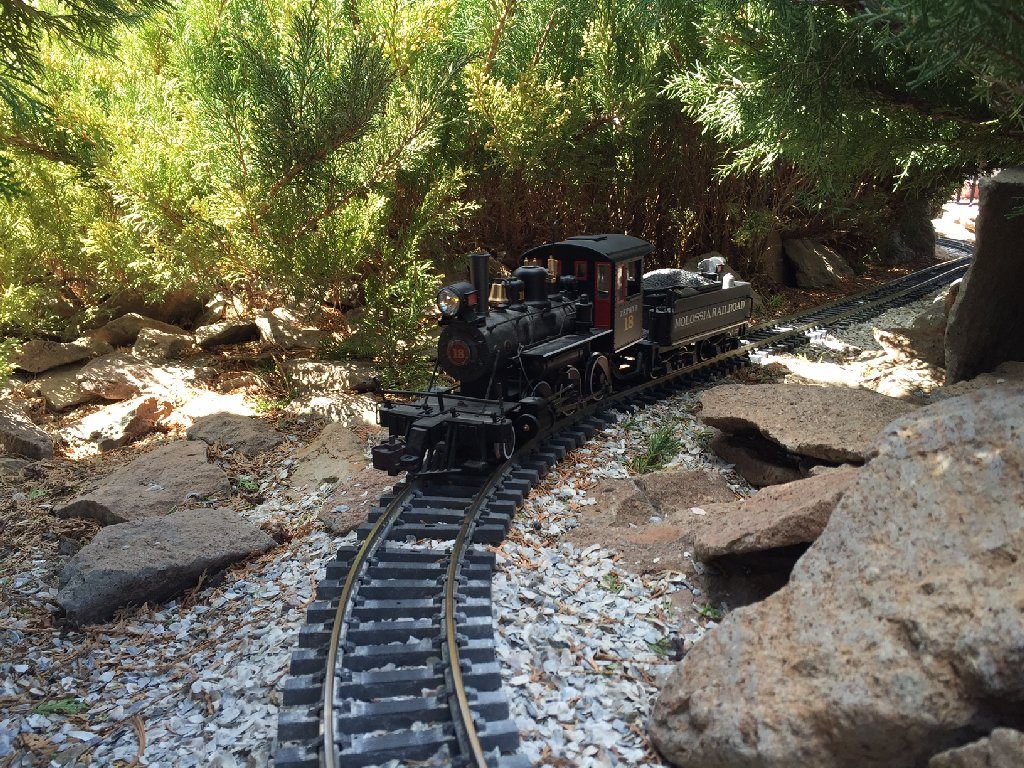
The Molossia railroad.
But despite its eccentricities, Baugh’s project to create his own nation is very much an earnest one. “It started nearly 40 years ago, as an actual nation, not just something in the backyard. It is active day-to-day just like a normal country,” Baugh says. His ultimate aim is to become something similar to the Marshall Islands, a presidential republic in free association with the U.S. Micronations today are becoming more well known than ever, something Baugh credits to the internet. Molossia hosted Micro Con in 2015, “a meeting of Denizens of the Micro-national World”, with delegates from 17 other micro-nations gathering in Anaheim, raising public awareness of these somewhat idiosyncratic and often delightful small whimsical countries.
Join Kevin Baugh for a free tour of the Republic of Molossia on Obscura Day, a worldwide day of exploration on April 16. No passport required.











Follow us on Twitter to get the latest on the world's hidden wonders.
Like us on Facebook to get the latest on the world's hidden wonders.
Follow us on Twitter Like us on Facebook